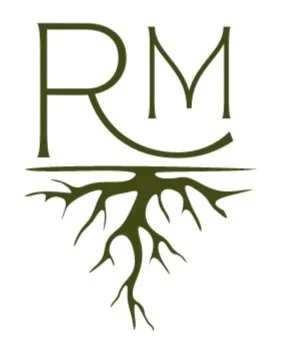What to know about
Placenta Encapsulation:
What are the benefits of consuming my placenta?
Based on anecdotal evidence, there are numerous possible benefits to the ingestion of placenta in different forms, including, but not limited to:
An increase in milk supply.
Milk supply coming in at a faster rate, than compared to previous births when the placenta wasn’t consumed.
A faster physical recovery period, which may be attributed to nutrients such as potassium, iron, sodium, phosphorus, vitamins B6 and B12, estrogen, and progesterone that exist in the placenta.
A reported decrease in Baby Blues, Postpartum Depression, and Mood and Anxiety, that may also be attributed to the replenishing of the above-mentioned nutrients and hormones that are abundant during pregnancy but drop significantly post-birth.
How is the placenta prepared?
The placenta is first rinsed with water and then examined carefully to remove any meconium staining or placental infarcts (lesions or masses on the placenta caused by a disruption in blood flow between the placenta and the baby). It is then steamed (i.e. moist heat) according to Safe Minimum Cooking Temperatures for beef (an internal temp of 160ºF) and then dehydrated (i.e. dry heat) in strips at 160 ºF for a minimum of 8 hours, and a maximum of 16 hours, before being ground and put into vegan capsules.
What makes us “experts”?
Truthfully, nothing prevents you from taking your placenta home and consuming it yourself in some way. The only major difference is that our specialists have current San Diego County Food Safety Training Certifications (renewed and retested every 3 years), and annual recertifications in Blood-Borne Pathogen Safety Training. We prepare each placenta according to strict OSHA standards for sanitation and safety and transport them according to the World Health Organization’s standards for safe organ transplants. Additionally, all our placenta experts have taken a Placenta Encapsulation Certification course, and adhere to the same food safety standards.
Is consuming my placenta safe?
There are very few medical research studies about the benefits of placenta consumption, but there is no factual evidence that the consumption of placenta is unsafe or dangerous.
A case study that unfortunately dictates many views on placenta encapsulation was recorded in September 2016 when an infant in Oregon contracted late-onset Group B Streptococcus (GBS) 5 days after the completion of treatment for early-onset GBS. The report done on this case, diagnosed that the cause of this was due to the mother consuming placenta capsules infected with GBS.
Now, that being said, there are multiple things to consider:
Sample Size and Scope:
The study is based on a single case report, which limits the generalizability of the findings. It is difficult to draw broad conclusions about the risks of placenta encapsulation from a single incident.
Temperature and Time of Dehydration Process:
The Centers for Disease Control states that GBS is sensitive to moist heat at 131 ºF for 30 minutes and susceptible to dry heat at temperatures of 160 ºF for at least an hour. The study mentions that the placenta was dehydrated at 115°F–160°F (46°C–71°C) but does not provide specifics on the duration at each temperature. This vagueness makes it difficult to assess whether the dehydration process was sufficient to kill GBS bacteria. Based on the information provided, it can also be assumed that the encapsulator did a raw preparation of the placenta, which is a valid method of encapsulation in most cases, but not for a placenta infected with GBS. If done correctly, there should not be any harmful bacteria present after encapsulation.
Lack of Control for Other Variables and Confirmation Bias:
While the study isolates GBS from the placenta capsules and the infant, it does not fully control for other potential sources of infection, such as other household members or environmental factors - which it mentions in the study’s article itself. Additionally, the researchers might have focused on the placenta capsules as the primary source of infection due to the unique nature of this case, potentially overlooking other sources or contributing factors.
Incomplete Information on Processing Standards:
The study criticizes the lack of standardization in placenta processing but does not offer a comprehensive comparison with other food safety standards that could provide a clearer benchmark.
Assumptions on Maternal Colonization:
The study assumes that the consumption of contaminated placenta capsules significantly elevated maternal GBS colonization, yet there is no direct evidence provided that links maternal colonization to the infant’s late-onset GBS infection beyond the temporal association.
Publication Bias, and Recall and Reporting Bias:
The unusual nature of the case (placenta consumption leading to GBS infection) might have made it more likely to be reported and published, which could contribute to an overestimation of the risks associated with placenta encapsulation. Additionally, the study relies on self-reported data from the mother regarding her use of placenta capsules and other health behaviors, which can be subject to inaccuracies. Additionally, the article does not provide any indication that the mother informed the encapsulator about a GBS infection or that the encapsulator was aware of it before processing the placenta.
Cultural Bias:
There may be a bias against non-conventional medical practices such as placenta encapsulation. The study appears to approach the practice with a skeptical perspective, which could influence the interpretation of the data. Considering the American culture we encounter daily, which is rooted in colonization, it is fair to acknowledge that cultural biases may be present in this article.
To sum up, while the study provides important insights into a potential risk associated with placenta encapsulation, its findings are limited by the small sample size, potential biases, and lack of comprehensive control for other variables. Future research with larger, more detailed studies is needed to better understand the risks and benefits of this practice.
